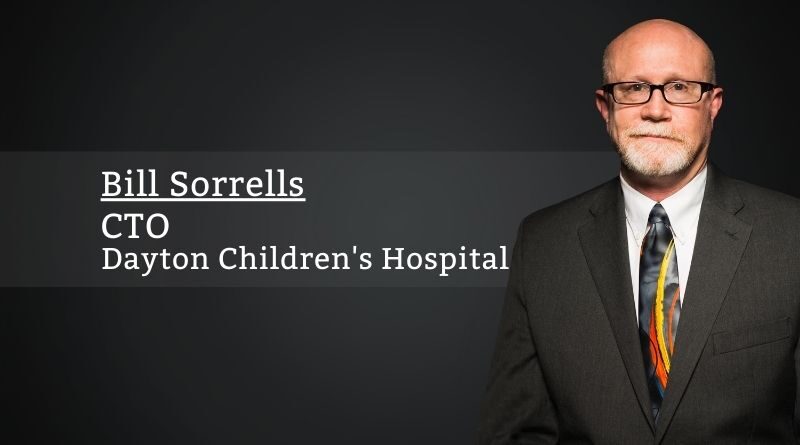Interoperability: Are we over the hump?
By Bill Sorrells, Director – CTO, Information Services, Dayton Children’s Hospital
Interoperability between health IT systems is a major challenge for hospitals and health systems today…still. In the early years of building health information exchanges (HIEs), getting healthcare organizations to participate and exchange/share data was a struggle. Adoption was poor and many were afraid of breach and the heavy government penalties, while others were afraid of losing a competitive edge. But we’ve moved on…a little.
21st Century Cures Act says interoperability enables secure exchange of PHI (patient health information) electronically using health information from other health IT without any extra effort on user’s part; it allows for complete access, exchange, and make use of all health information available electronically; and does not constitute information blocking. So how do we evolve to meet government mandates and the spirit of information sharing? Moreover, how do we create value in improving patient safety and reducing the cost to deliver healthcare for everyone by effectively leveraging INFORMATION via interoperable health IT?
Today’s law requires that data be transmitted and written in a format that makes it possible to transfer data from one EHR system to another without a bunch of hoops for healthcare providers to SEE and understand the complete picture of a patient’s medical history. Sounds easy enough, but the struggle is STILL real. Why?? Is it because of the lack of IT? No. Essentially agreements need to be crafted to bolt on “interoperability thinking” to the way healthcare does business. Often it’s an afterthought while it needs to be at the strategic level aligned at the healthcare vendor contract level. Yes, it needs to be spelled out in HIT contracts as service level agreement (SLA) deliverables and performance measures.
According to the HIMSS (Healthcare Information and Management Systems Society), there are four levels of interoperability:
Foundational (Level 1): Establishes the inter-connectivity requirements needed for one system or application to securely communicate data to, and receive data from another
Structural (Level 2): Defines the format, syntax, and organization of data exchange, including at the data field level for interpretation
Semantic (Level 3): Provides for common underlying models and codification of the data, including the use of data elements with standardized definitions from publicly available value sets and coding vocabularies, providing shared understanding and meaning to the user
Organizational (Level 4): Includes governance, policy, social, legal, and organizational considerations to facilitate the secure, seamless and timely communication and use of data, both within and between organizations, entities, and individuals. These components enable shared consent, trust, and integrated end-user processes and workflows.
Interoperable healthcare system following the Affordable Care Act and Meaningful Use considerably aided the nation’s response to COVID-19.
The need of achieving interoperability is to give providers the most comprehensive view of a patient’s health needs to deliver safer, higher quality care that is affordable. But there are barriers to the above that includes:
• Lack of integration…interoperability needs to be up-front at the EHR/HIT contract level
• Disjointed health IT enforcement…compliance of interoperability needs to be internal/external
• Incorporating interoperability standards…standardization is key and requires effective leadership
• Challenges coordinating stakeholders across the industry…incentivize??? That sort of worked for Meaningful Use
• Active information blocking…without a good reason penalize
Can Blockchain be a catalyst for interoperability? Though many in the healthcare industry have promoted blockchain as a solution to healthcare’s interoperability issues, its practical application is still unclear. Blockchain, the underlying technology behind bitcoin, is a distributed ledger system for tracking transactions in a highly secure system. Blockchain in healthcare would enable a provider, payer, patient or otherwise to look at a patient’s health information to know and trust each piece of data in that record. Blockchain data is designed to be read-only and can’t be edited or deleted, likely preventing fraud associated with altering a permanent record. However, differing levels of maturity when it comes to data quality and governance of healthcare organizations with low-quality data does nothing to improve interoperability. But there’s still an opportunity with Blockchain.
Consider some of the same goals of an HIE and compare nearly the same as blockchain:
• Accuracy…Immutable and deterministic data
• Security and privacy…cryptography and dual public/private key
• Accessibility and transparency…decentralization, clear visibility and auditing
• Efficiency…reduced transaction costs between agents
• Utility…availability of digitized and structured data
• Interoperability…harmonized between data sets
Did the COVID-19 pandemic re-start interoperability?
Unlike previous governmental “triggers” to data sharing in healthcare, the COVID-19 pandemic drove parties to work together quickly to find data-sharing solutions. To face immediate-term problems created by COVID-19, healthcare organizations were forced to abandon administrative hurdles that hampered efficient data sharing in order to tackle those obstacles. As a result, providers and IT vendors discovered ways to improve data sharing efficiency in real time for the COVID-19 response.
Interoperable healthcare system following the Affordable Care Act and Meaningful Use considerably aided the nation’s response to COVID-19. Without the maturity of EHRs and data sharing, the pandemic response would have been crippled and more would have died. The pandemic response removed many blockers and barriers for interoperability out of necessity, as all opportunities to share data were on the table.
COVID-19 pandemic has improved interoperability in healthcare data exchange, which may eventually help enhance the care delivery and its cost-effectiveness in the US. Throughout the COVID-19 outbreak, short-term, high-impact projects that addressed the more pressing need for efficient information flow across health providers and systems set aside larger long-term projects. Telemedicine maturity and availability alone benefitted from expanding the reach, range and time capability with time-sensitive policies and national response to technology production to assess and provide healthcare regardless of location.
But there’s still much to do in terms of interoperability maturity and pervasiveness. We must continue to explore “above and beyond” and find ways to share data with high availability and trust so we can address health equity issues, quality, affordability of care and continuous improvement in patient safety. Let’s not wait till the next pandemic.



